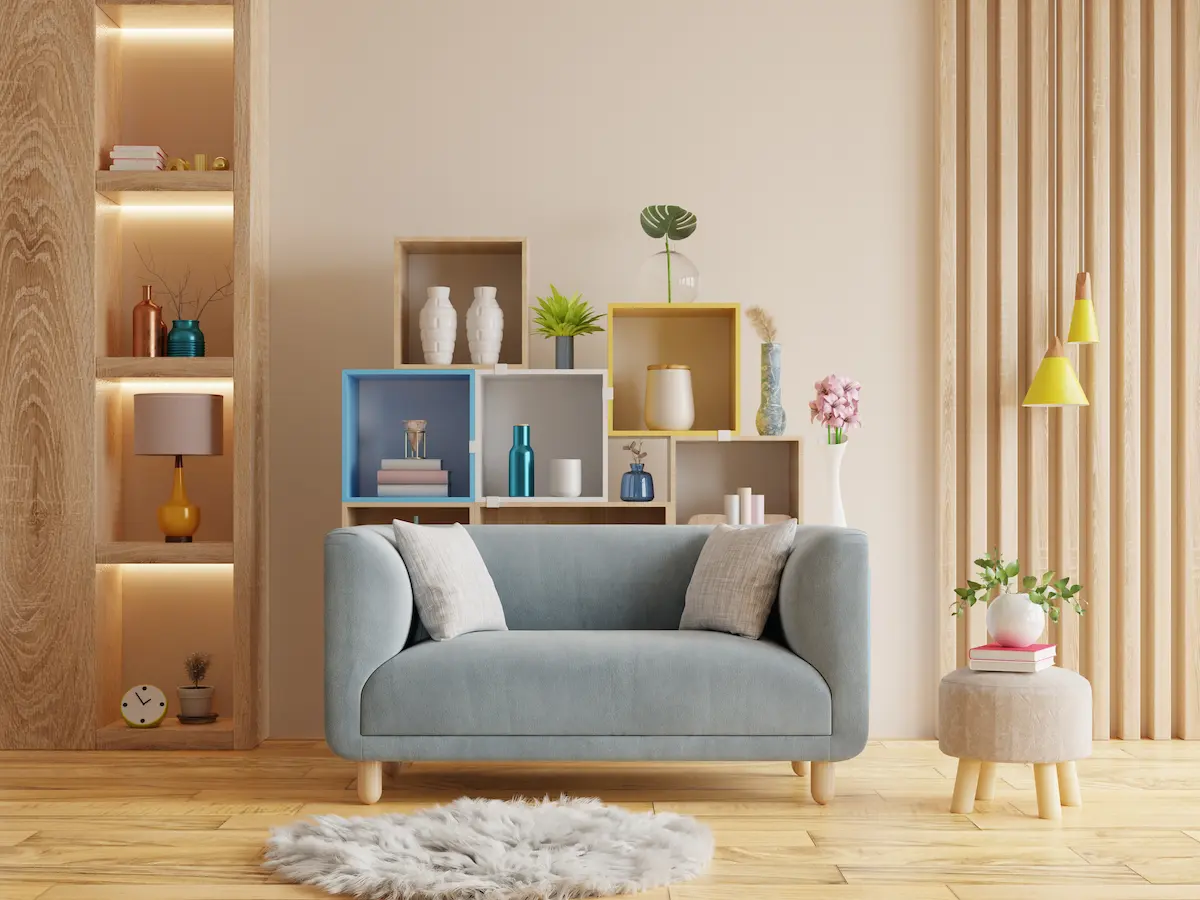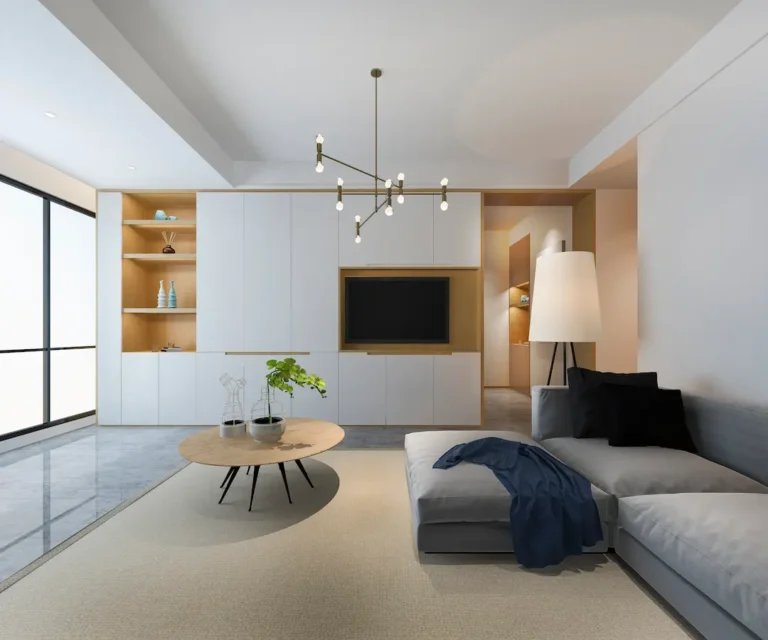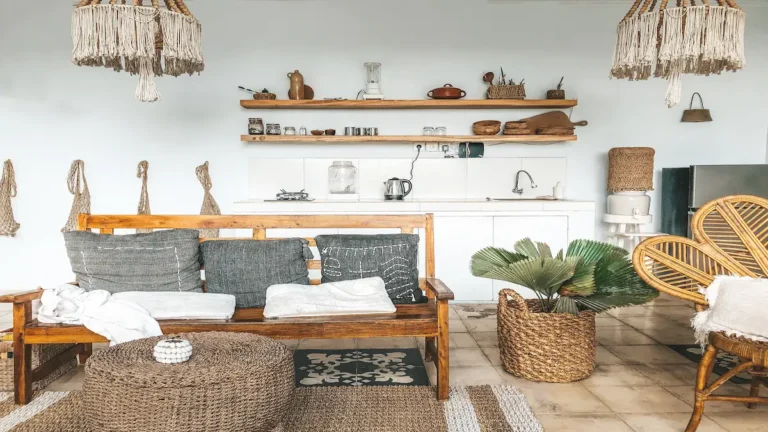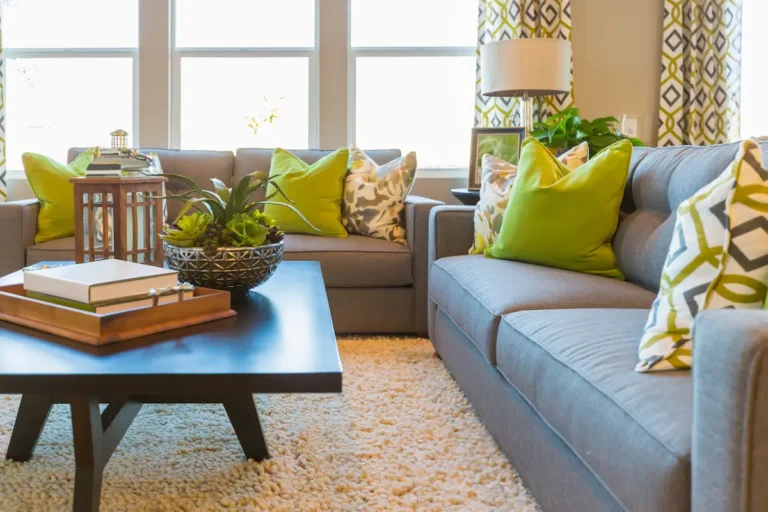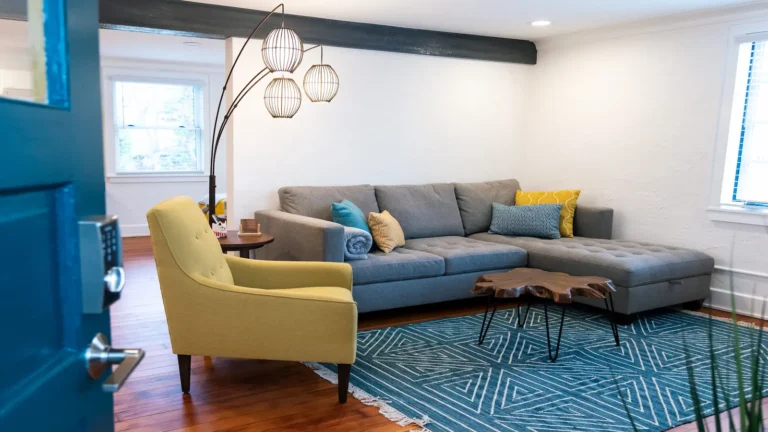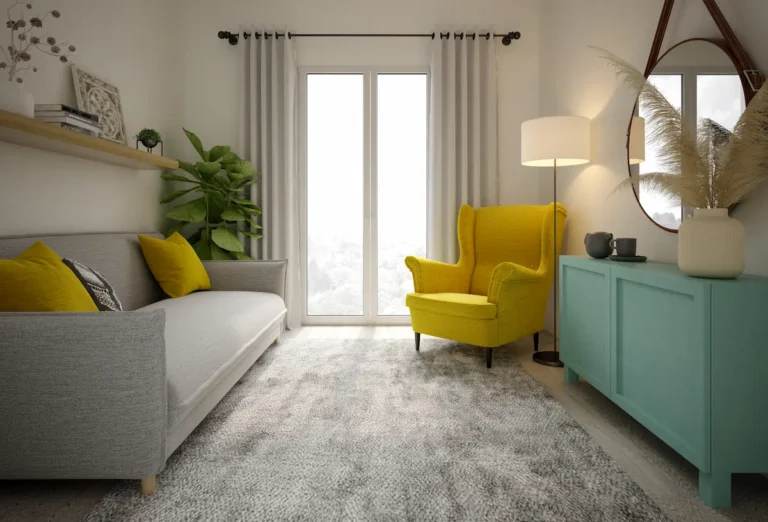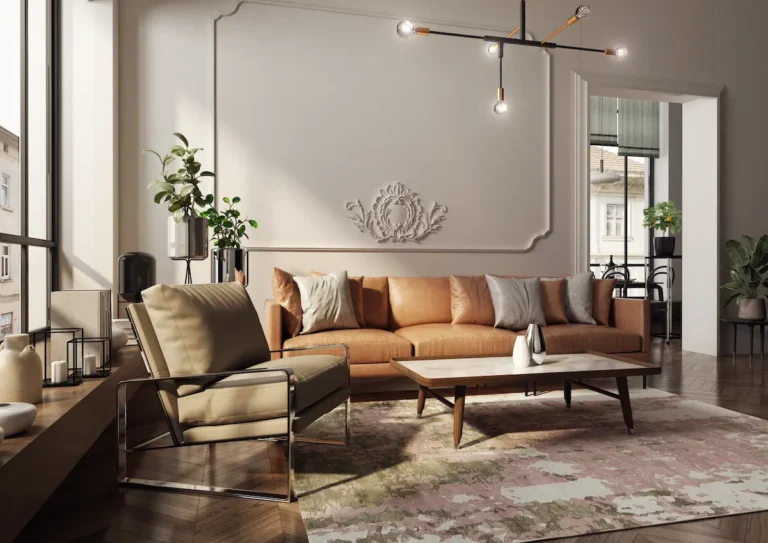Living in a small apartment or studio doesn’t mean giving up comfort or style. Some of the coziest and smartest homes are the little ones where every chair, lamp, and corner pulls its weight. Whether dressing up a compact flat or squeezing more life out of a mini loft, these small living room tips show that good taste never depends on square footage. We’ll walk you through handy tricks, room-shop-friendly layouts, and pro designer hacks that turn tiny sitting areas into warm, polished escapes.
Create Zones With Furniture Layouts
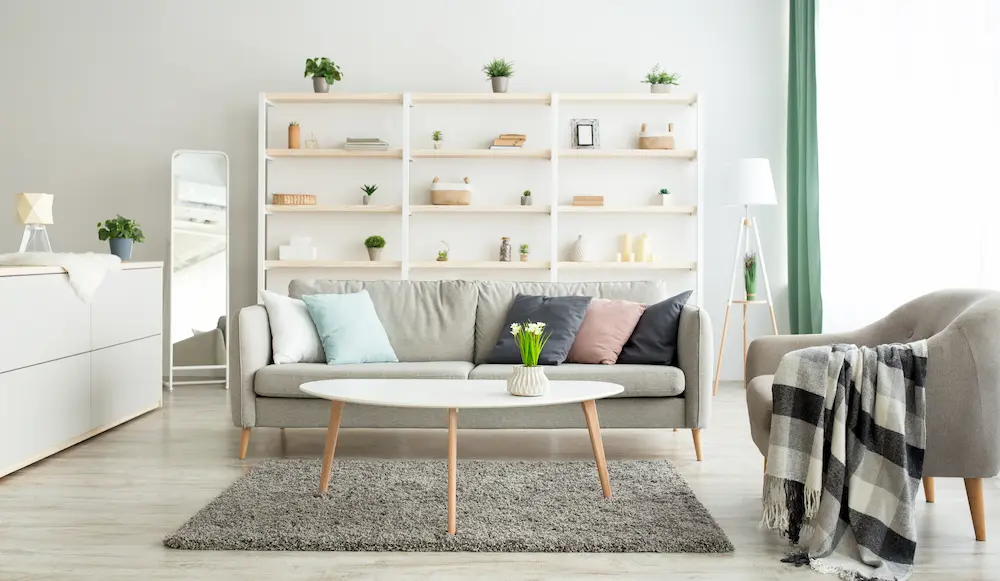
Instead of shoving everything against the wall, pull some pieces into the room and make mini zones. A colorful rug under the chairs or a narrow console behind the couch gives each spot its purpose without closing the place in.
Embrace Dual-Purpose Pieces
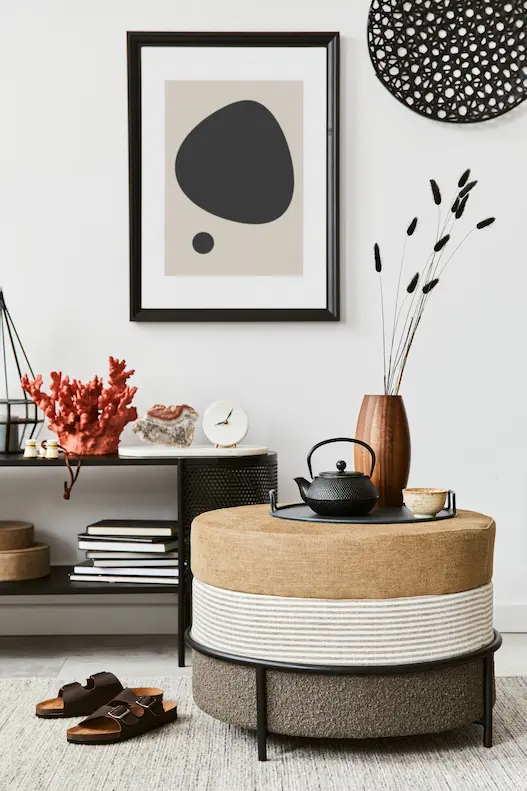
Search for coffee tables that pop open for books, board games, or poufs that hide leftover throws. Pieces that do two jobs not only free up floor space but also reduce the piles that crowd small rooms.
Try a Soft Color Palette
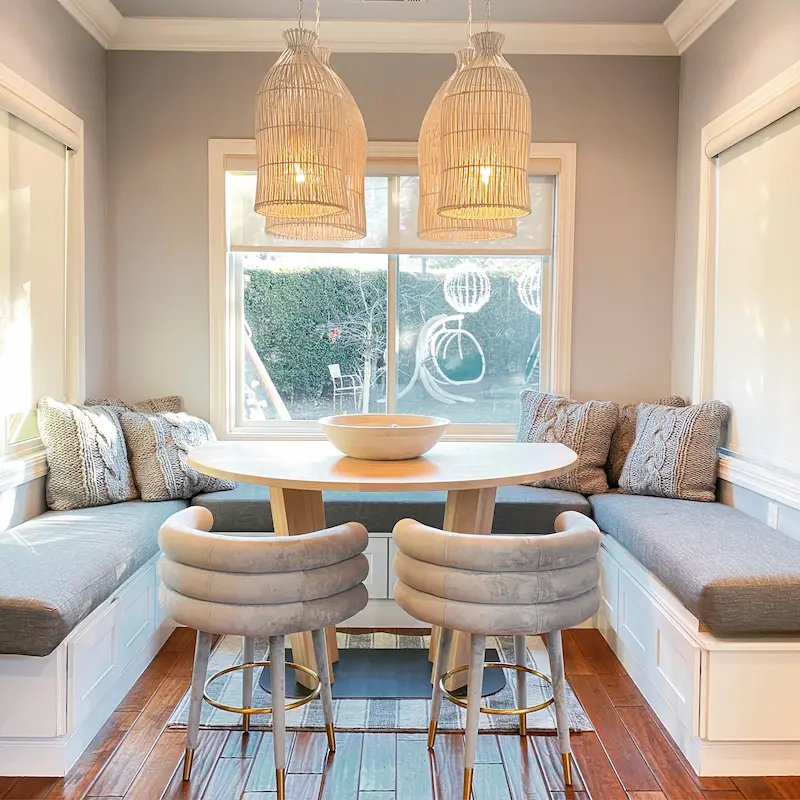
Light colors like creamy white, pale gray, or mellow beige bounce daylight around and help walls fade. Painting walls and ceilings the same hue tricks the eye into seeing extra height, making the room feel bigger and airier.
Use Wall-to-Wall Shelving
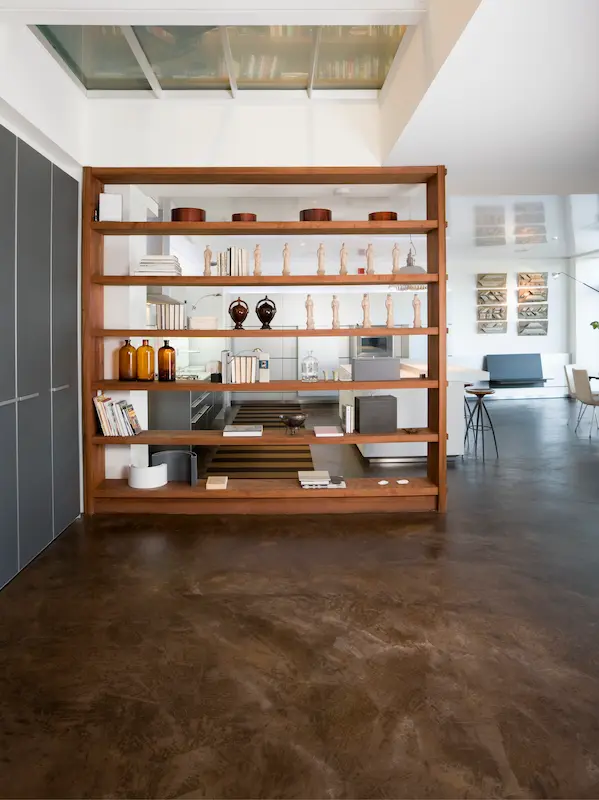
Whether you go for built-ins or floating boards, shelves that span the whole wall pull the eye up and give you loads of vertical storage without crowding the floor.
Incorporate Glass and Lucite Furniture
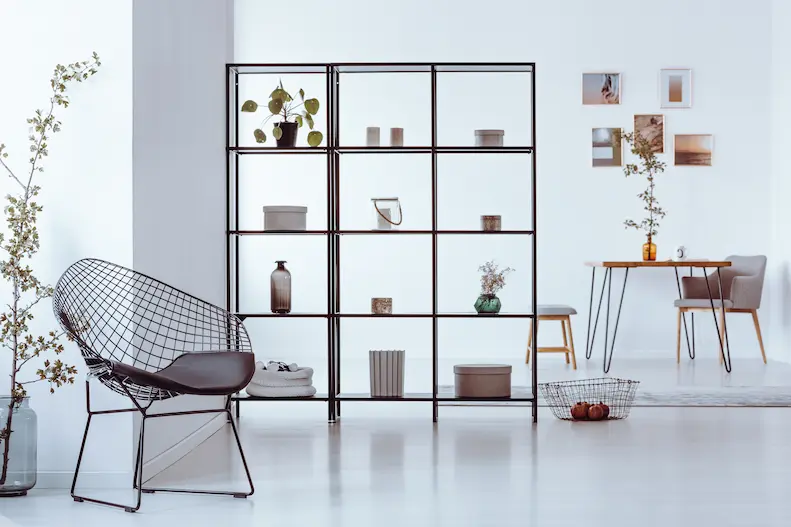
See-through pieces, like glass tables and Lucite chairs, lighten a room and keep your sight lines clear. Because they disappear visually, the space feels open rather than heavy.
Keep Curtains the Same Color as Walls
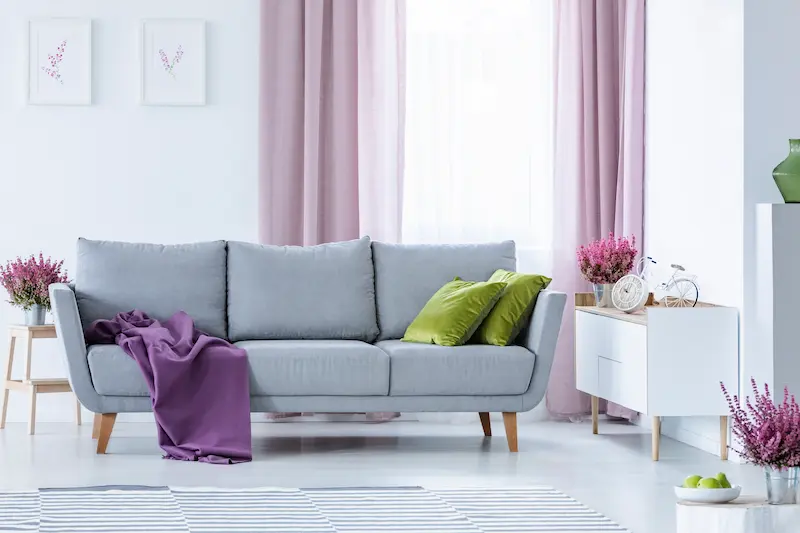
Choose drapes that match your wall color so there’s no harsh break. This trick stretches your room sideways and makes the ceiling look higher.
Add Mirrors to Reflect Light
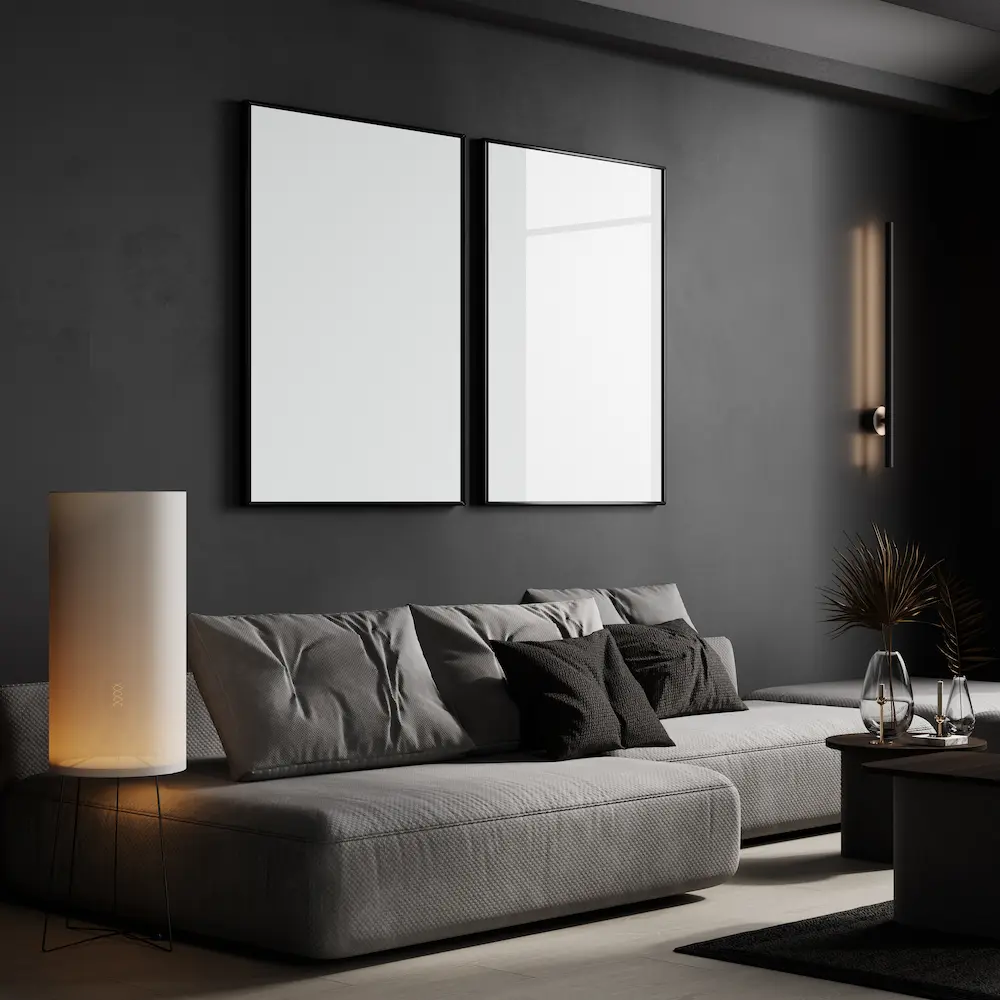
Mirrors never go out of fashion simply because they work. Hang one across from a window, and it will toss light around the room and give the feel of extra square footage.
Choose Low-Profile Furniture
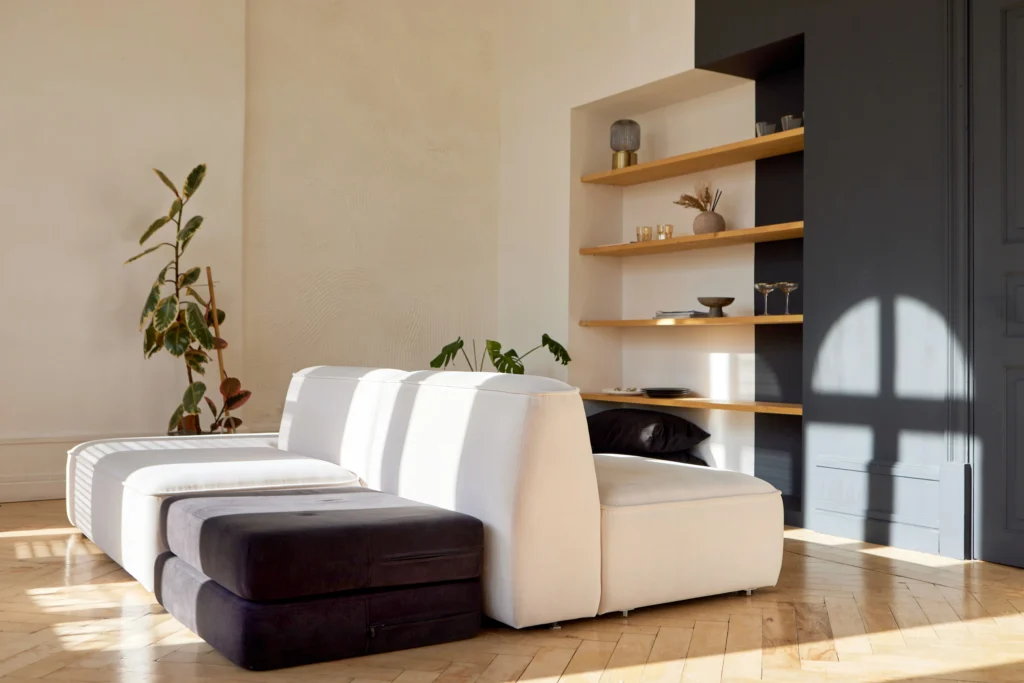
Sleek sofas and chairs with low backs leave sight lines open, making the ceiling look taller. Choose pieces with thin legs, too, so even more floor shows through.
Mount Your TV
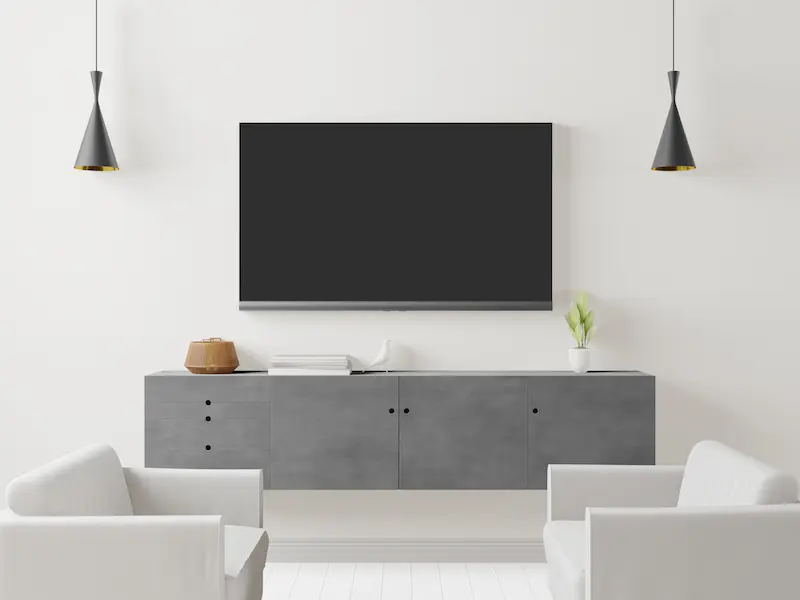
Put the TV on the wall instead of resting it on a big stand or cabinet to free up floor space.
Pick a Statement Light Fixture
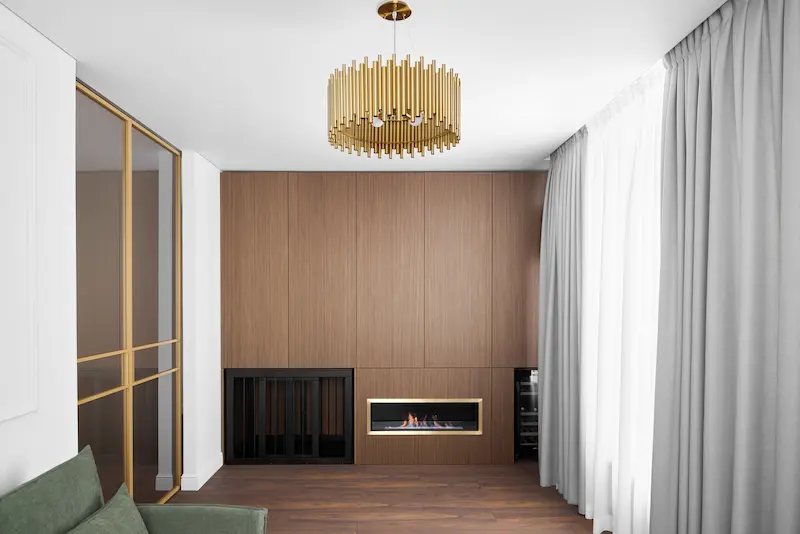
A bold chandelier or single pendant pulls eyes upward while leaving floors clear, so your room can breathe yet still feel dressed.
Embrace Minimalism
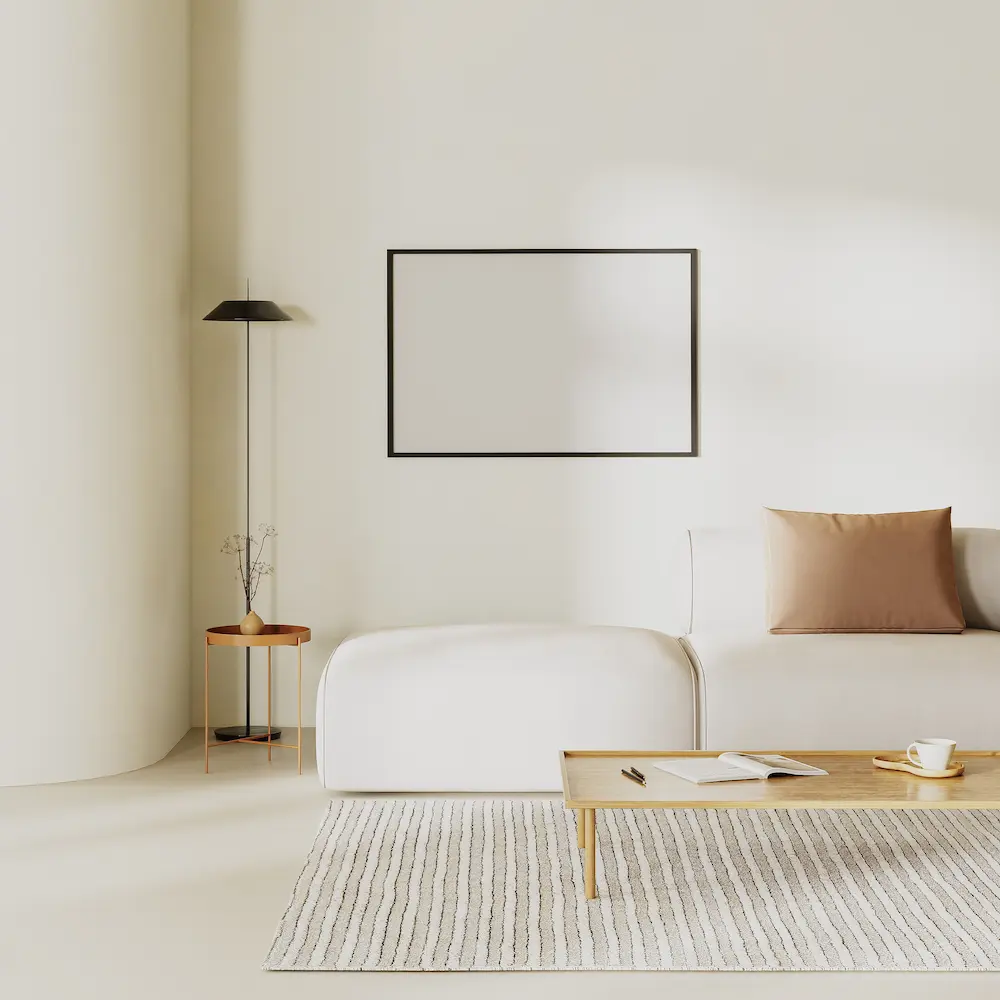
Keep only the pieces that spark joy or serve a true purpose. Removing extras makes each item count and stops surfaces from feeling cramped.
Layer Lighting Strategically
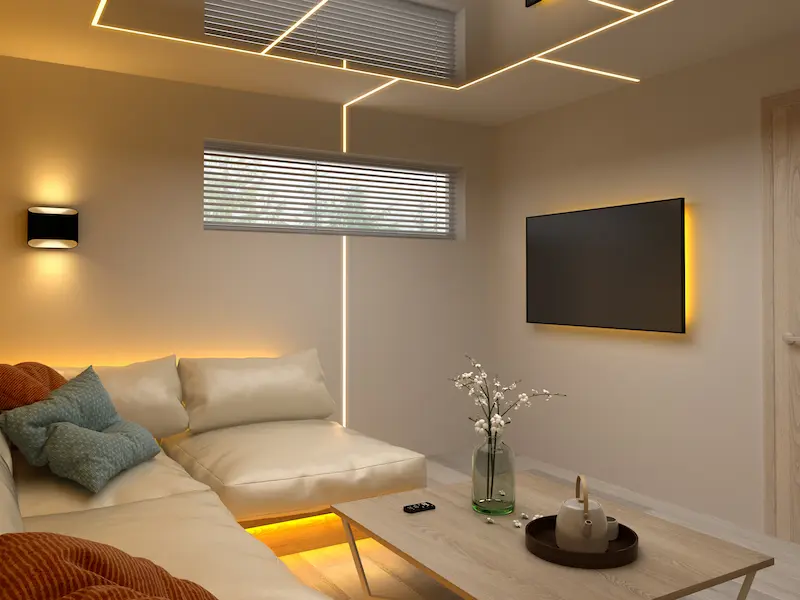
Skip the one-bright-ceiling-bulb routine. Group table lamps, floor lamps, and sconces to build warm pools of light and give the space more depth.
Incorporate Natural Elements
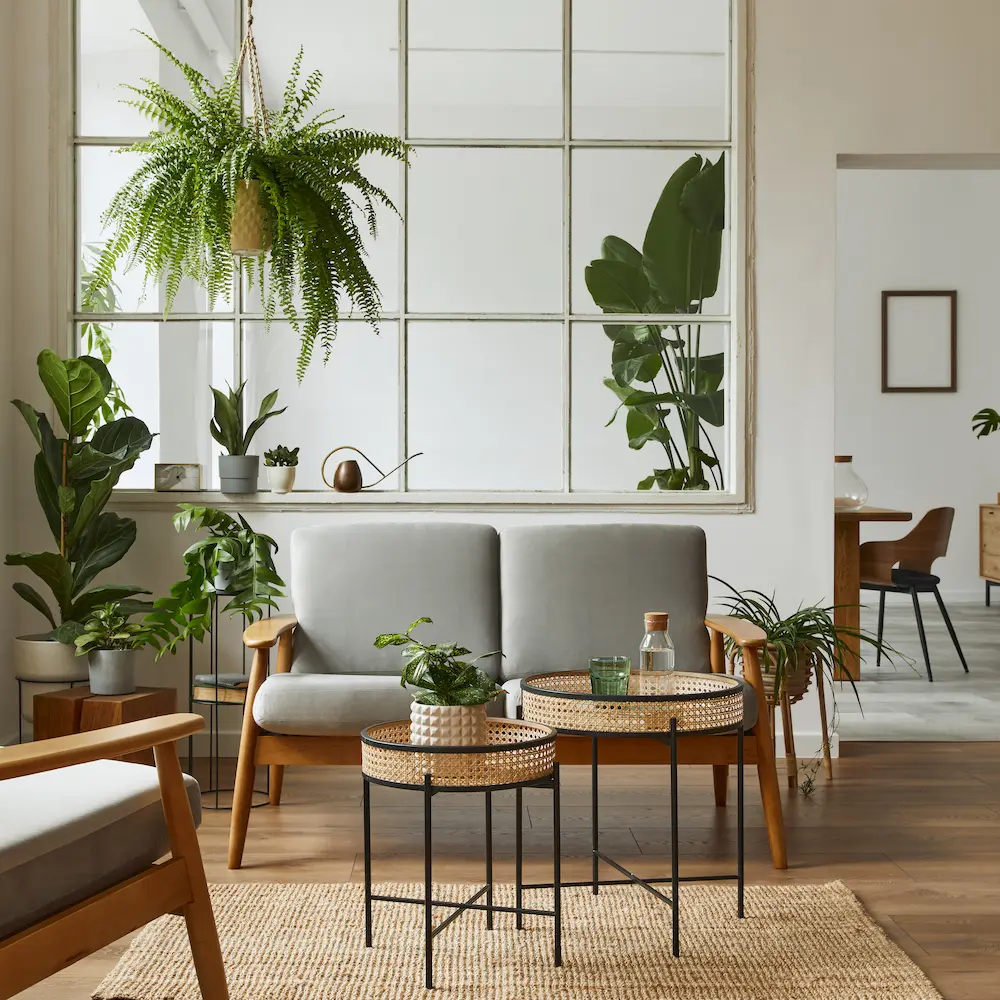
Raw wood, soft linens, and rounded shapes add touchable warmth that eases tight corners and helps tiny rooms feel lived-in and welcoming.
Go Bold With a Small Space
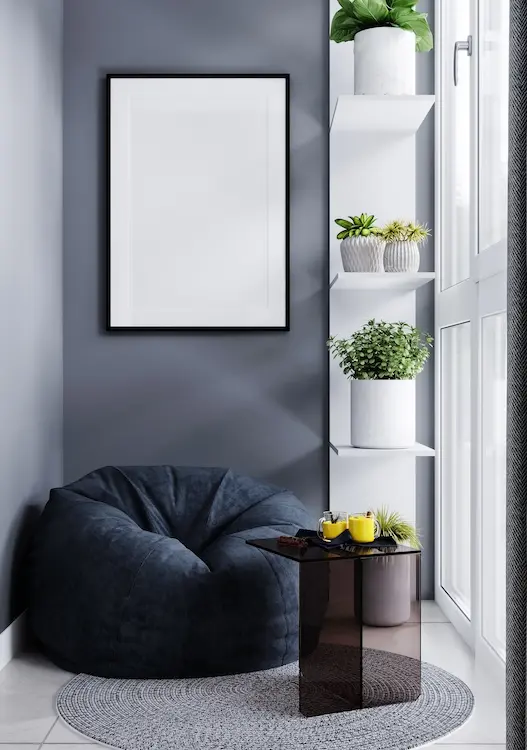
Deep navy, forest green, or rich charcoal can make a small room feel bigger by creating cozy edges rather than closing the space.
Use Sliding or Pocket Doors
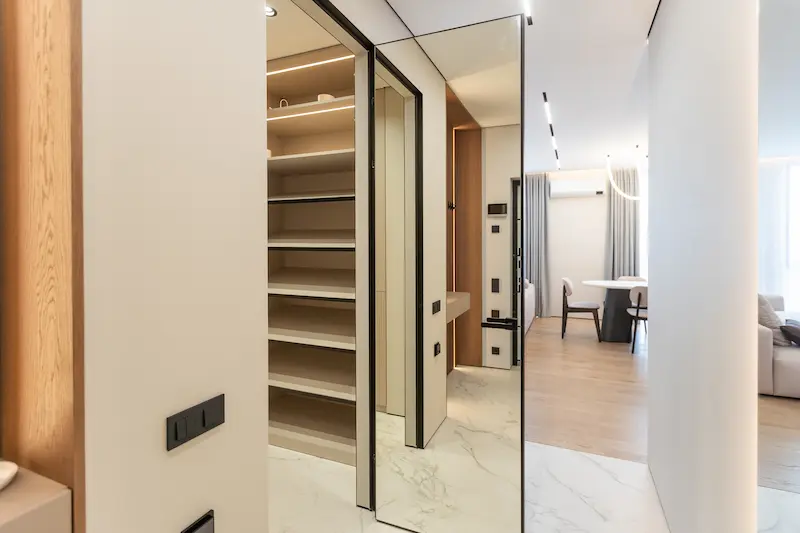
Old-fashioned swing doors chew up floor space. Pocket sets or sliding barn styles tuck away, giving you every inch for furniture and flow.
Lean Into Texture Over Pattern
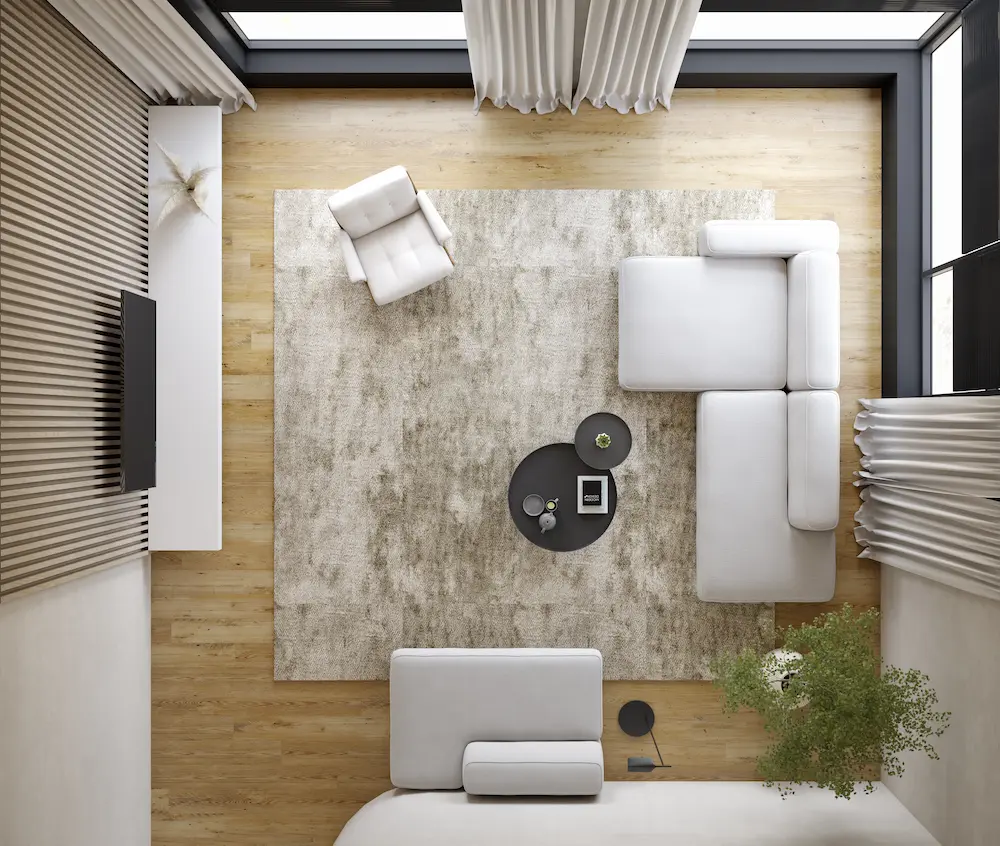
Trade busy prints for nubby wovens, seagrass baskets, or boucle throws. Hence, the eye grazes across layers rather than battling scattershot pattern overload.
Think Vertically With Decor
Try hanging art, mirrors, or shelves a little above eye level. That small move lifts your gaze and makes the whole room feel taller.
Keep a Tight Color Story
Choosing just one or two coordinated colors- warm neutrals or cool grays ties everything together and reduces busy-looking clutter.
Paint Woodwork and Trim the Same Shade
When baseboards, trim, and door frames match the wall, the vision flows instead of stopping at every line. The room then looks bigger and calmer.
Skip the Sofa Altogether
Break the sofa habit. A slim loveseat, a daybed, or even two big chairs fit your space and style better than a bulky couch.
Invest in Custom Solutions
Built-in shelves or made-to-measure pieces squeeze every inch out of odd corners and turn awkward areas into something smart and stylish.
Use Corner Seating
Sliding a small sectional into the corner adds plenty of seats without floating it awkwardly in the walk space.
Consider Armless Seating
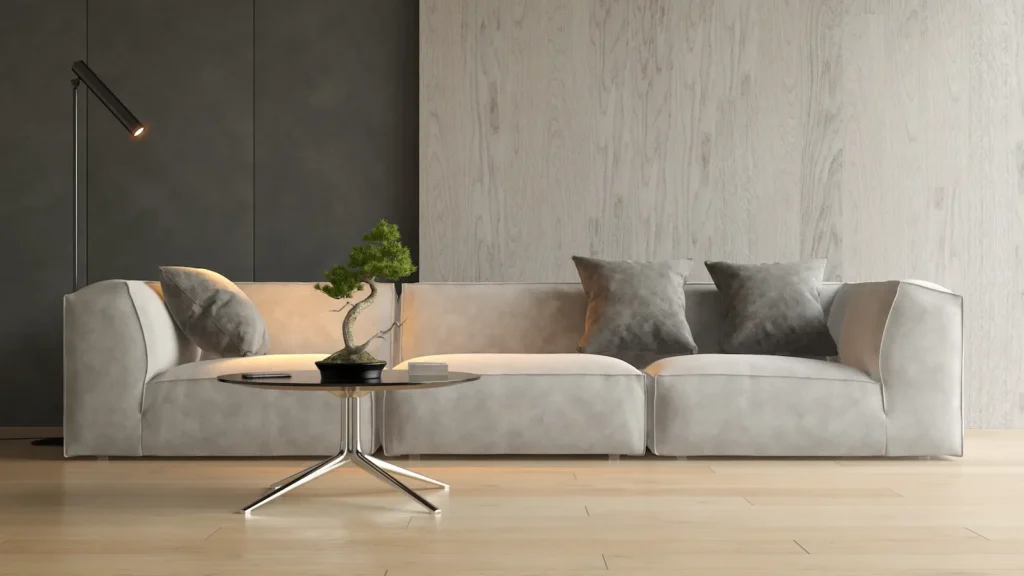
Armless chairs and sofas take up less visual weight, letting air move freely around the room and people slide past easily.
Emphasize Symmetry
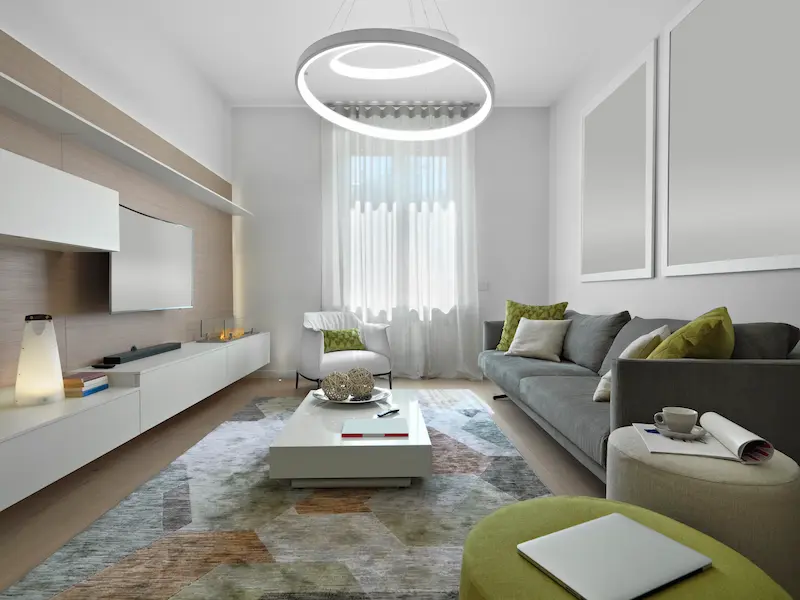
Placing matching chairs, twin lamps, or equal stacks of books on each side brings order to tight or lopsided spaces and feels pleasant to the eye.
Add a Pop of Contrast
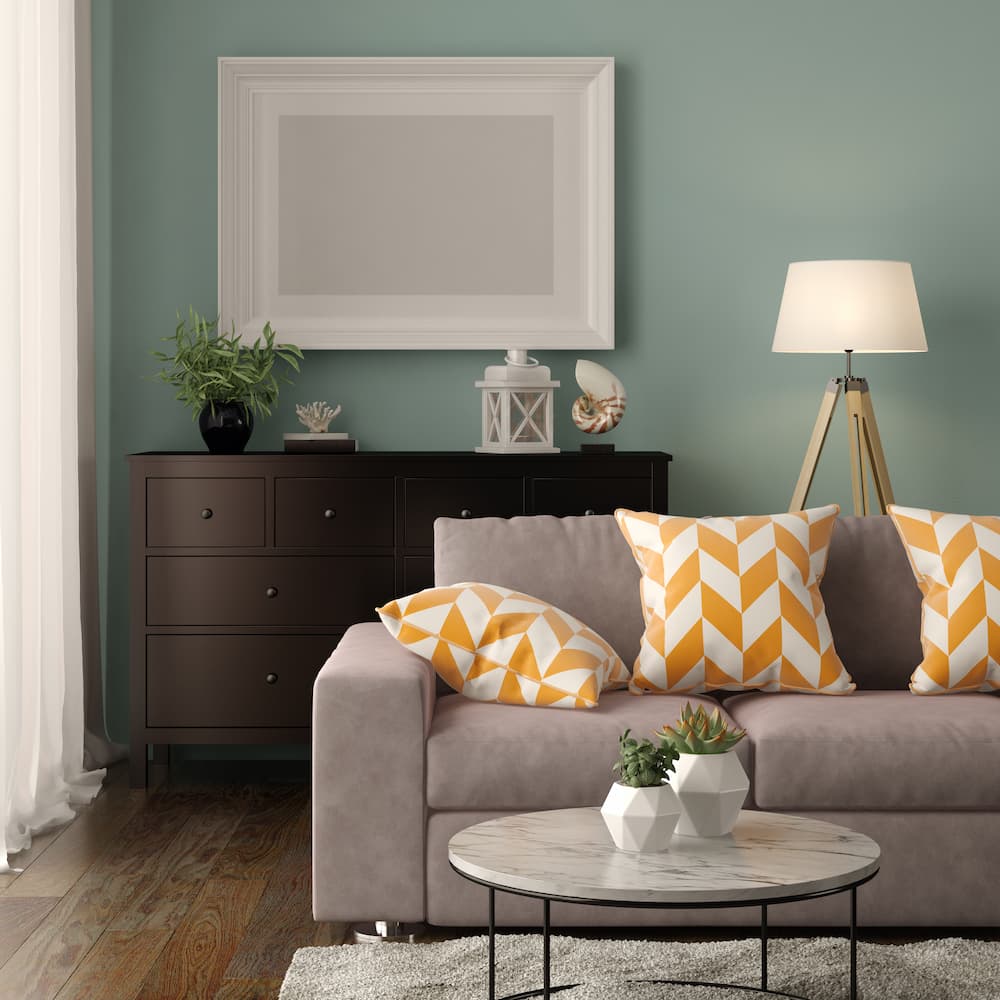
Slip a single burst of color into an all-neutral fiery pillow, bold art, or a vibrant rug- and watch the room perk up.
Hide Clutter With Closed Storage
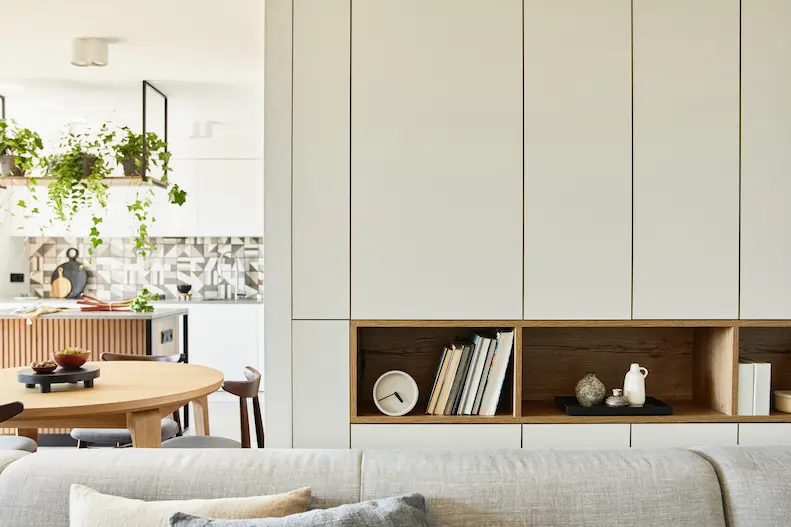
Even in open plans, doors, baskets, or lidded bins let you shove loose stuff out of sight and keep things looking neat.
Use Large Art Pieces

One big canvas draws the eye and feels calmer than a gallery wall packed with tiny prints in a snug room.
Opt for Leggy Furniture
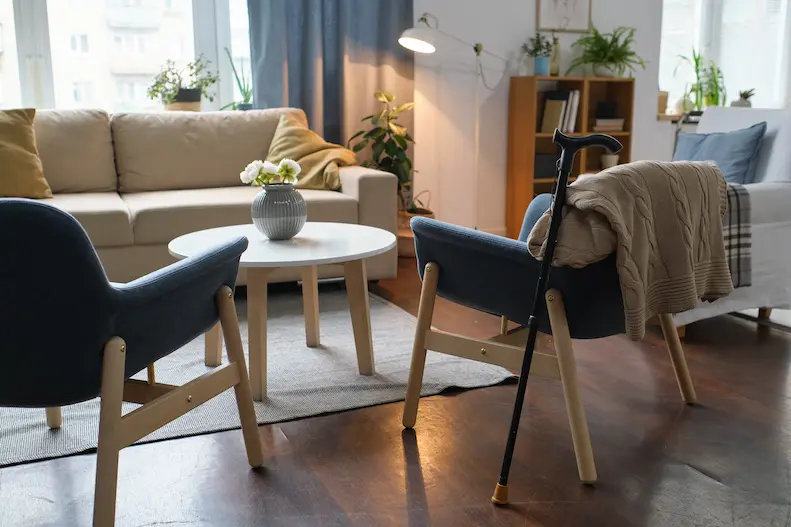
Furniture that stands on visible legs lets light slip under it, making the space feel airier than heavy, skirted styles.
Play With Proportions
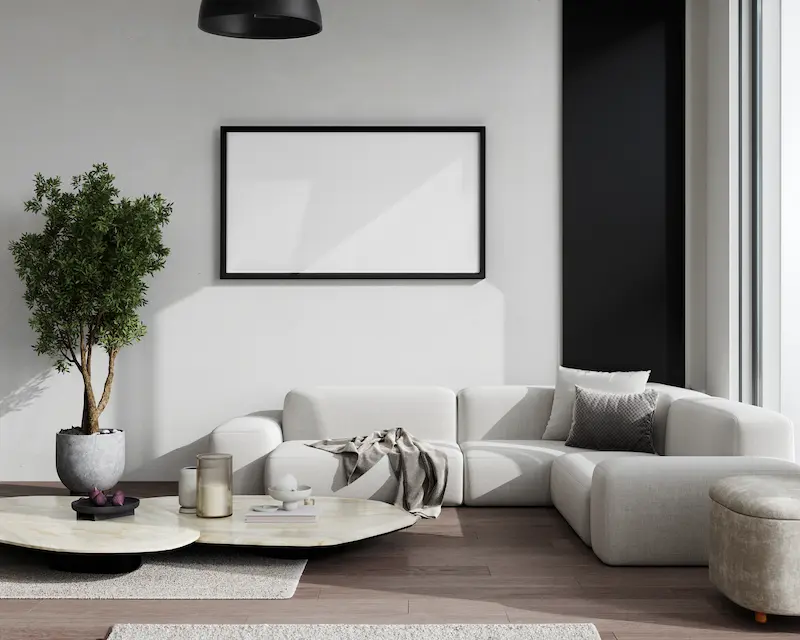
Giant items aren’t off-limits. Large rugs or full-length mirrors can ground the room and trick the eye into seeing more width.
Ditch the Coffee Table
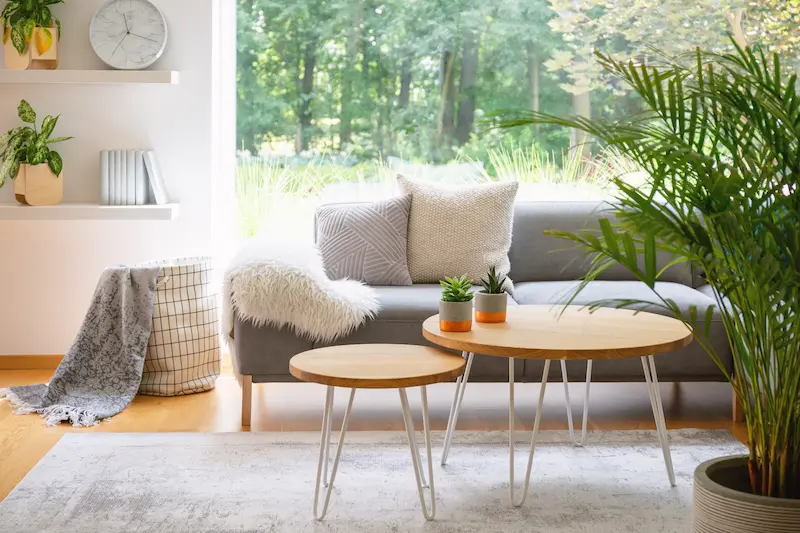
When a standard coffee table crowds you, swap it for nesting tables, a slim stool, or a soft ottoman on which you can kick your feet.
Try a Round Table
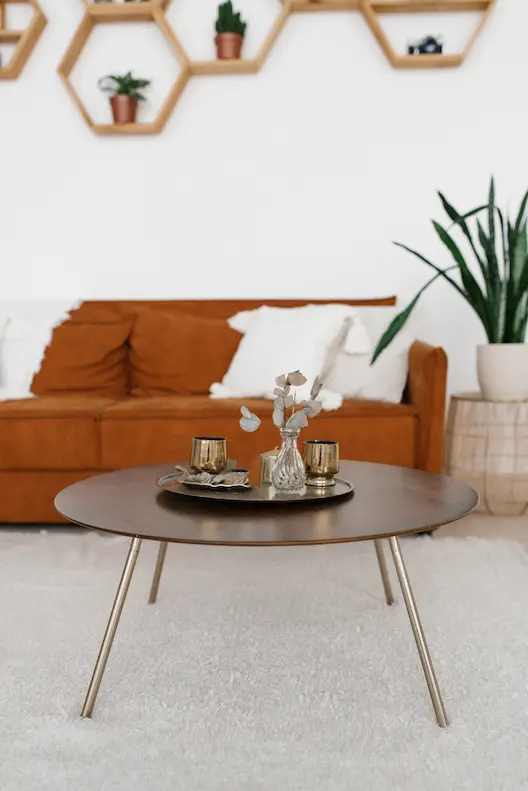
Curvy, round tables cut angles and take up less visual heft, helping small dining or living areas breathe while adding friendly flow.
Let the Light In
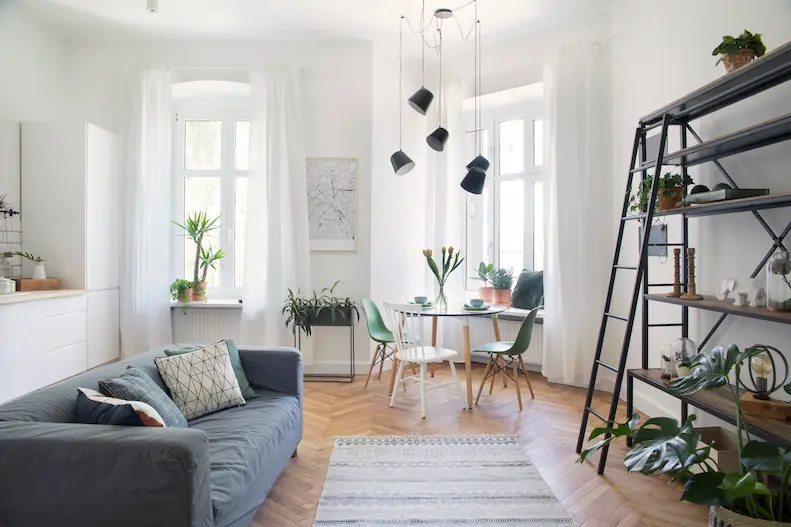
Don’t stuff big sofas or thick curtains in front of windows. Daylight is the easiest way to make any room feel bigger and brighter.
Repeat Shapes for Cohesion
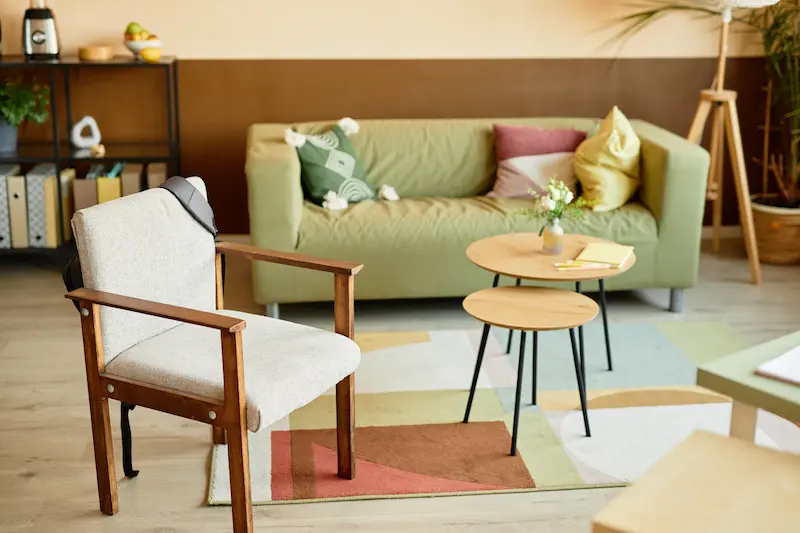
When you repeat circles, squares, or rectangles in lamps, frames, and other pieces, the space stops looking random and starts feeling planned.
Choose Foldable or Stackable Pieces
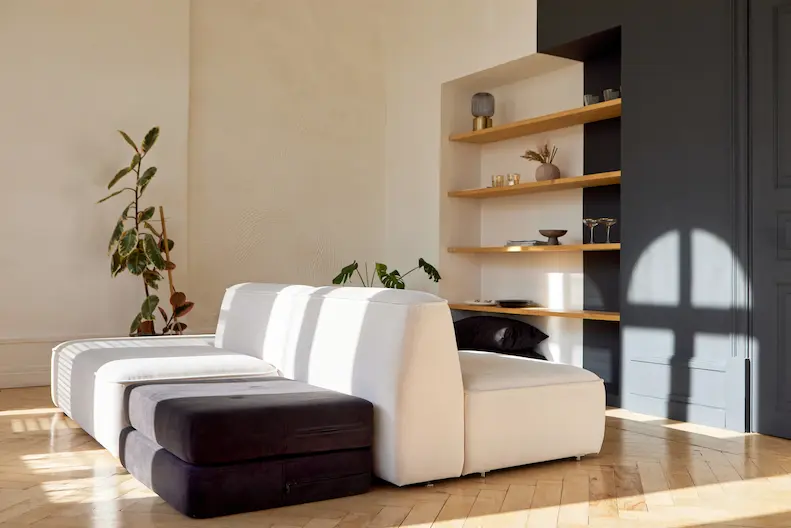
Light chairs and tiny tables that fold or stack slip out of the way when you need room and then pop back in for visitors without fuss.
Use Area Rugs to Define Sections
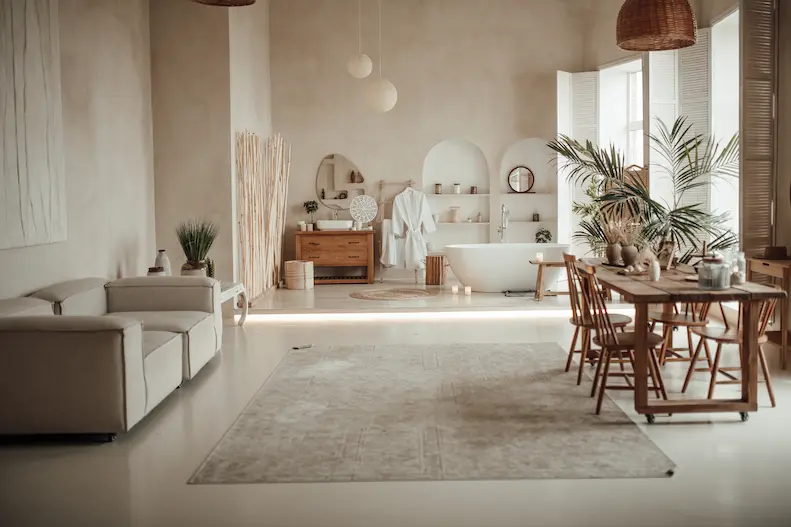
A single rug at the heart of an open studio quietly splits the living and dining areas, giving each one its little edge.
Paint the Ceiling
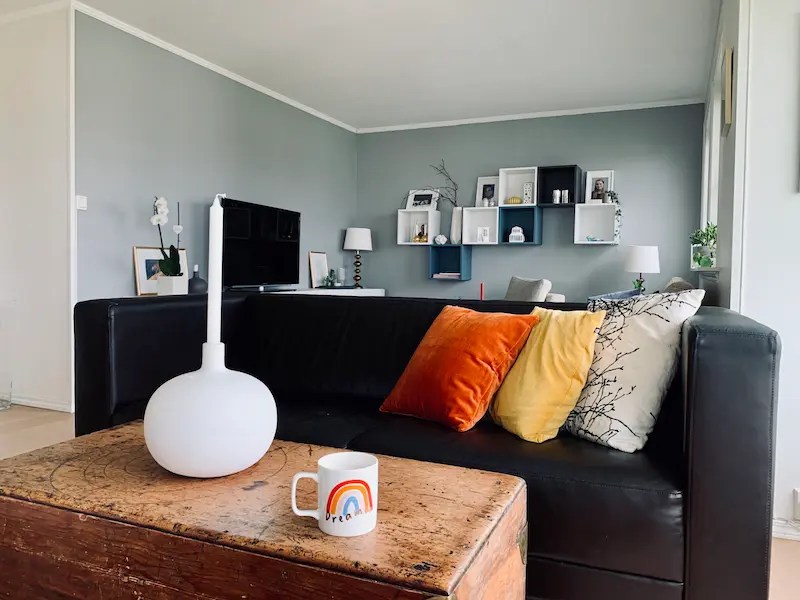
A ceiling tinted one shade lighter or darker than the walls adds surprising depth and makes the whole space look lovingly finished.
Install Sconces for Space-Saving Lighting
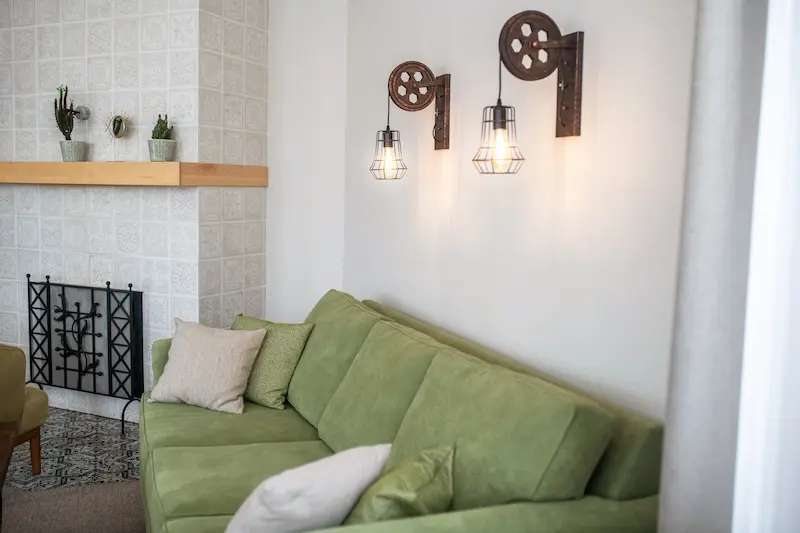
Hardwired wall lamps free up nightstands and leave floors clear, while their warm glow draws eyes upward and keeps the room open.
Float Furniture Off the Wall
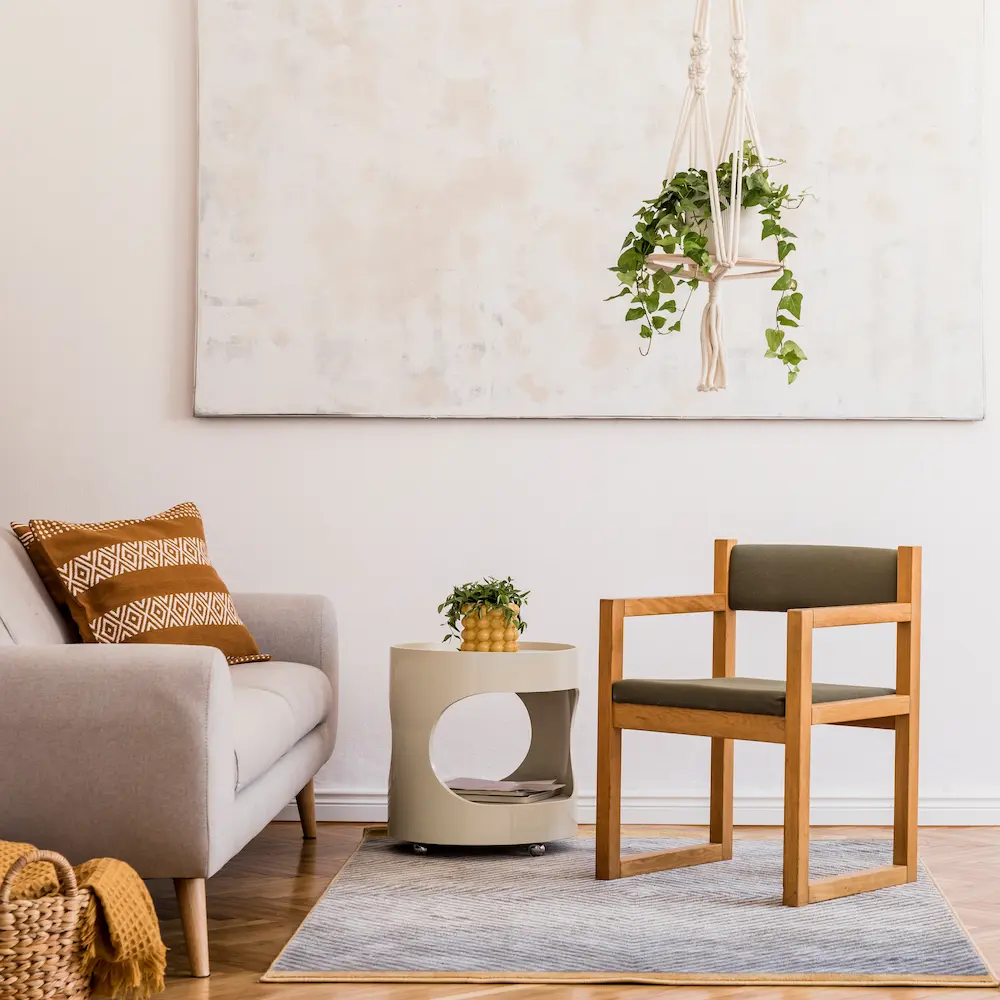
Pulling a sofa a few inches from the drywall lets air move around it, softens the traffic flow, and finally gives the piece room to breathe.
Use Monochrome Decor
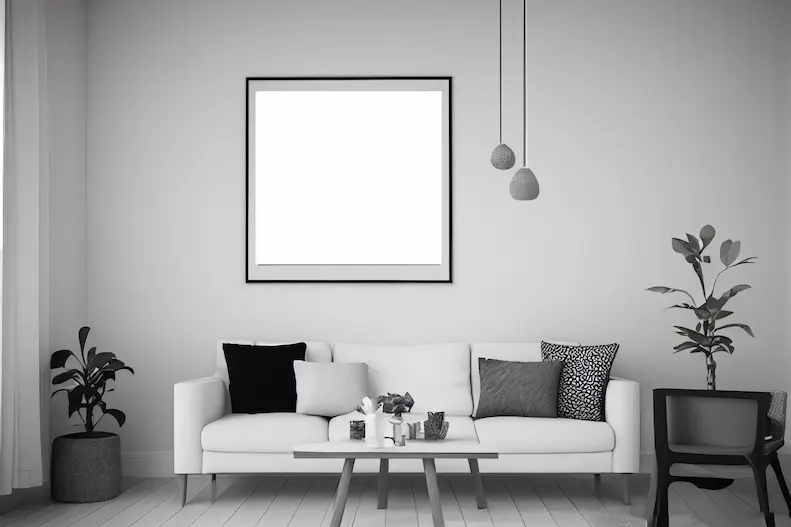
Dressing the room in layered shades of one color, gray or faded blue, links everything together and tricks the eye into seeing extra space.
Stash Everyday Stuff Smartly
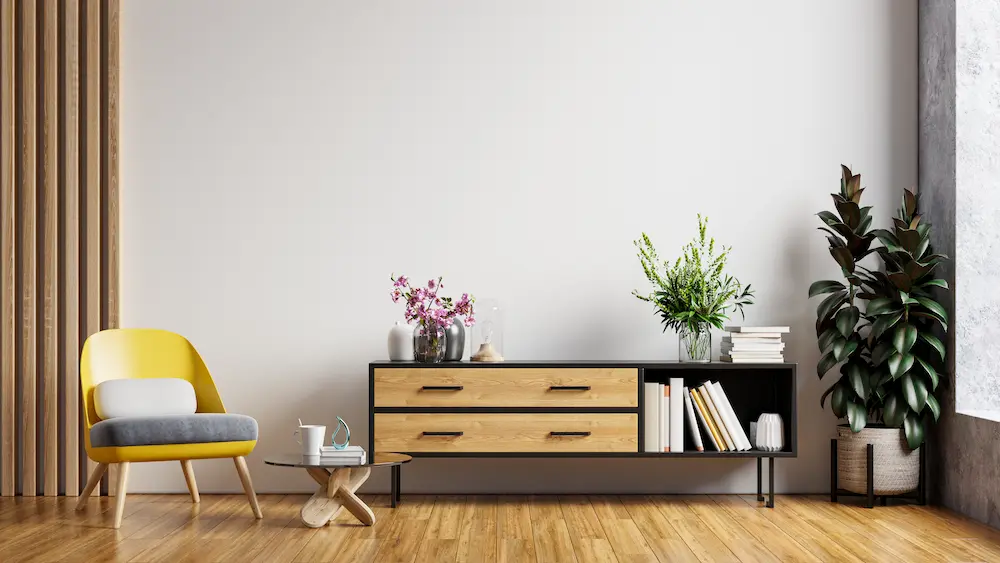
Designate one spot for remotes, use a small tray for incoming mail, and claim a drawer for chargers and cables. These easy mini-stations stop everyday bits from spilling all over the room.
Go Easy on Window Dressings
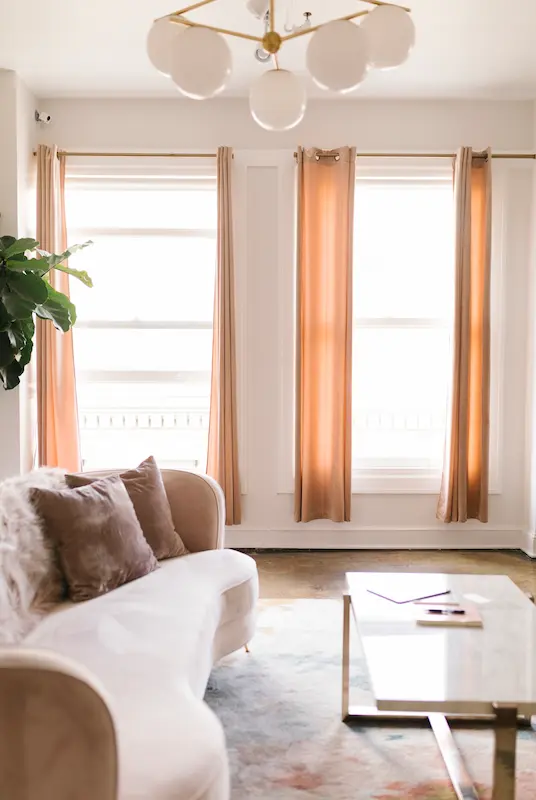
When nosy neighbors aren’t a worry, leave glass bare or hang sheer panels. Both choices flood the room with daylight and still soften sharp lines.
Claim Every Little Nook
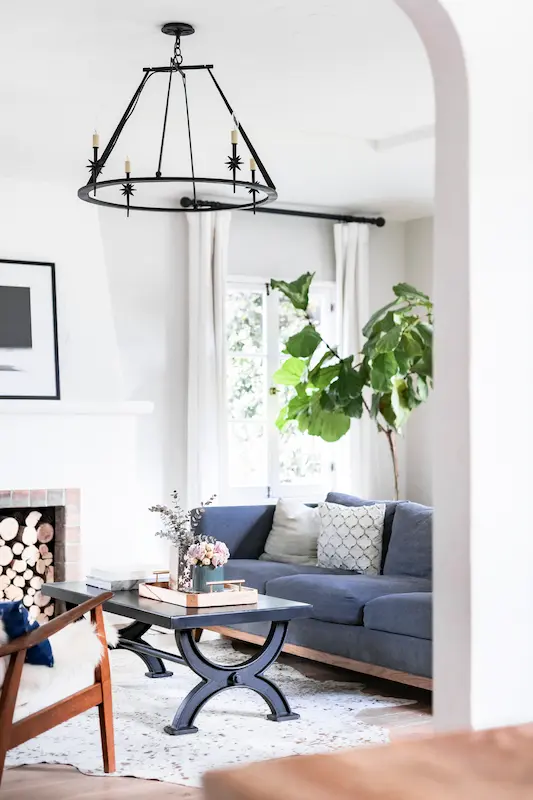
Bay windows, awkward alcoves, and tight corners become handy once you add a shelf, bench, or plant. A little creativity scales up space we usually ignore.
Pick Properly Sized Furniture
Big sofas and bulky tables dwarf tiny rooms, make walking tricky and trap air. Stay smart about scale so pieces fit and life flows comfortably.
Choose Light Wood and Finishes
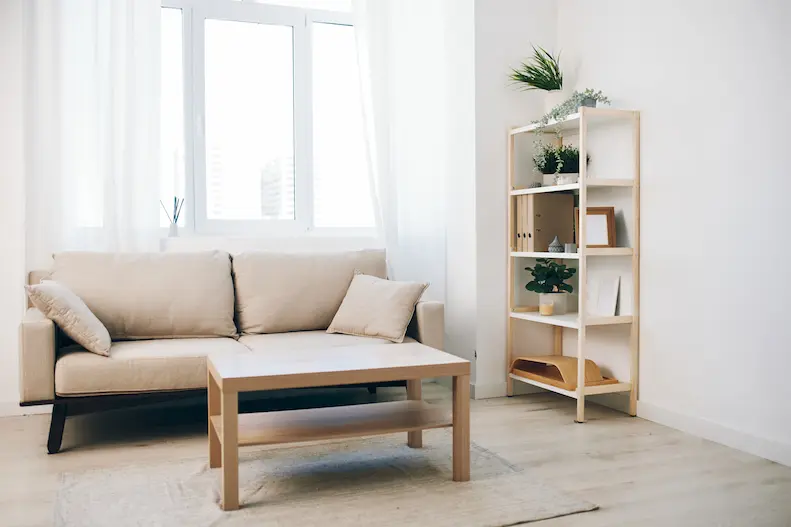
Blonde or pale timber feels almost transparent, letting walls and light breathe. Go darker only where you truly want drama.
Layer Rugs for Texture and Warmth
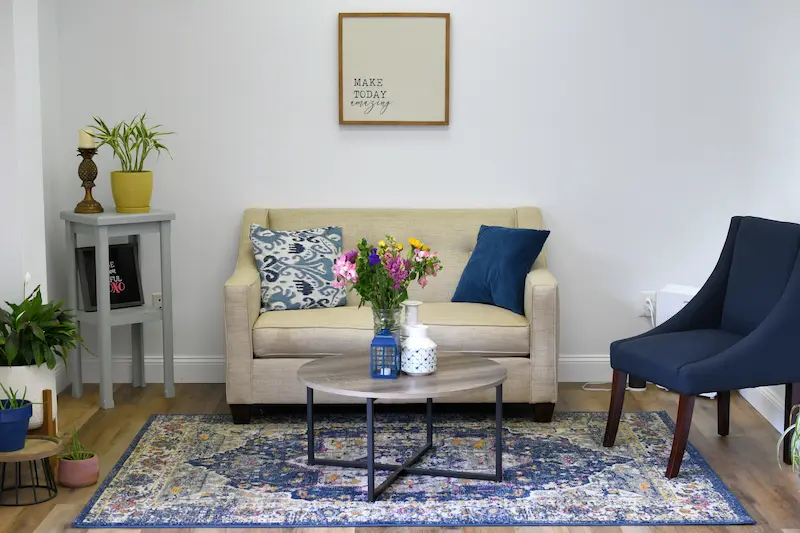
Start with a flat natural rug, then throw down a worn kilim or a patterned mat. The mix adds depth without crowding the floor.
Add Pieces that Tell Your Story
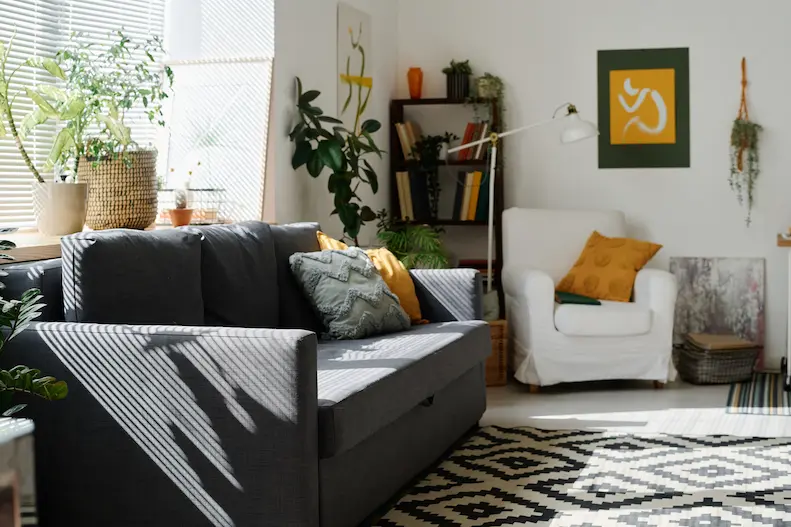
Frame a family photo, stack favorite books, or display Grandma’s vase. Little personal touches turn rented boxes into homes that feel like you.
Final Thoughts
Don’t think of a small living room as a problem of space. Think of it as a blank canvas where every color, chair, and shelf can tell your story. With smart layouts, light-but-bright paint, and furniture that pulls double duty, even a cozy nook can feel open, warm, and truly yours. Minimalist calm or happy, layered maximalism- you’d be amazed at how either looks at home in a room just a few steps wide.
